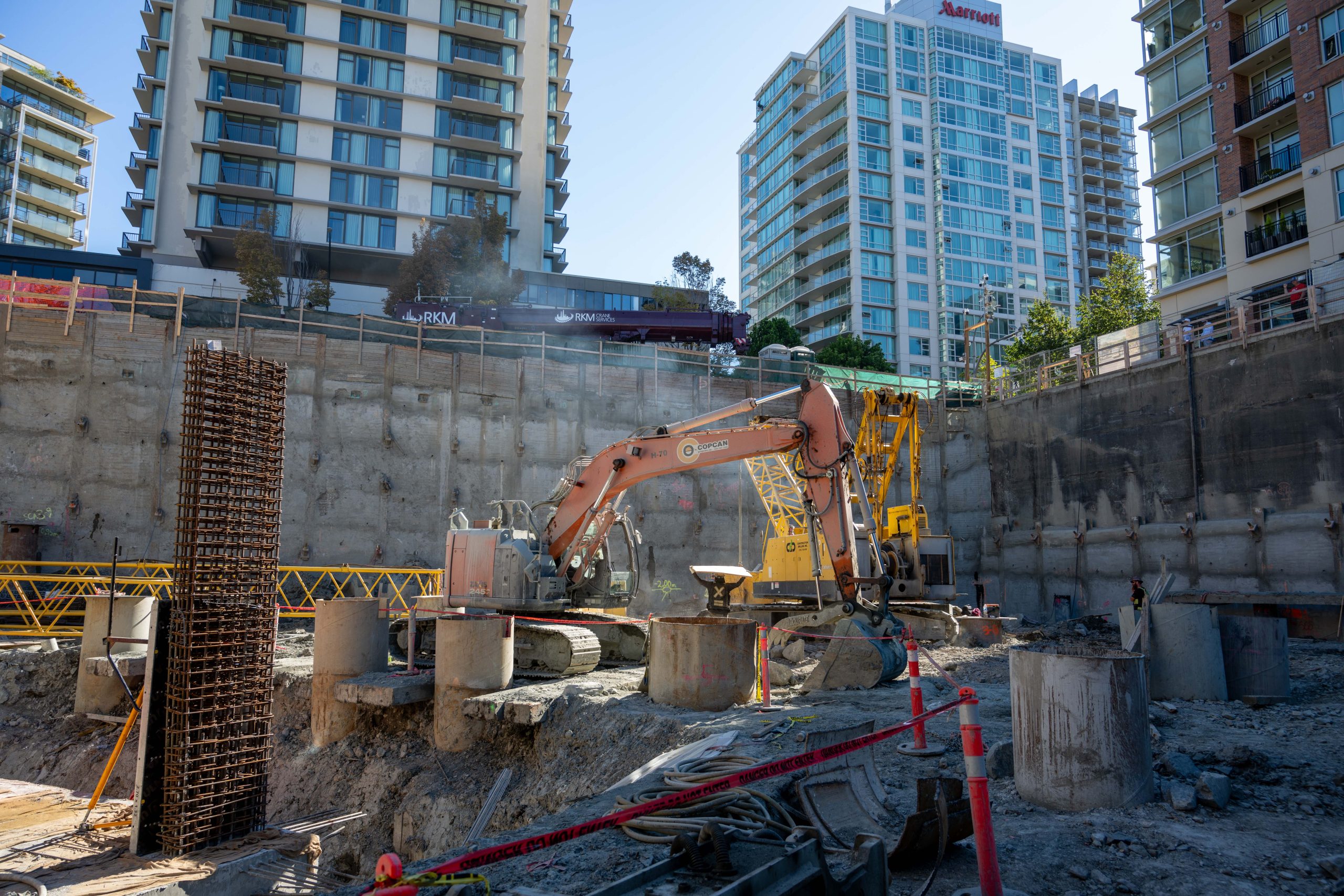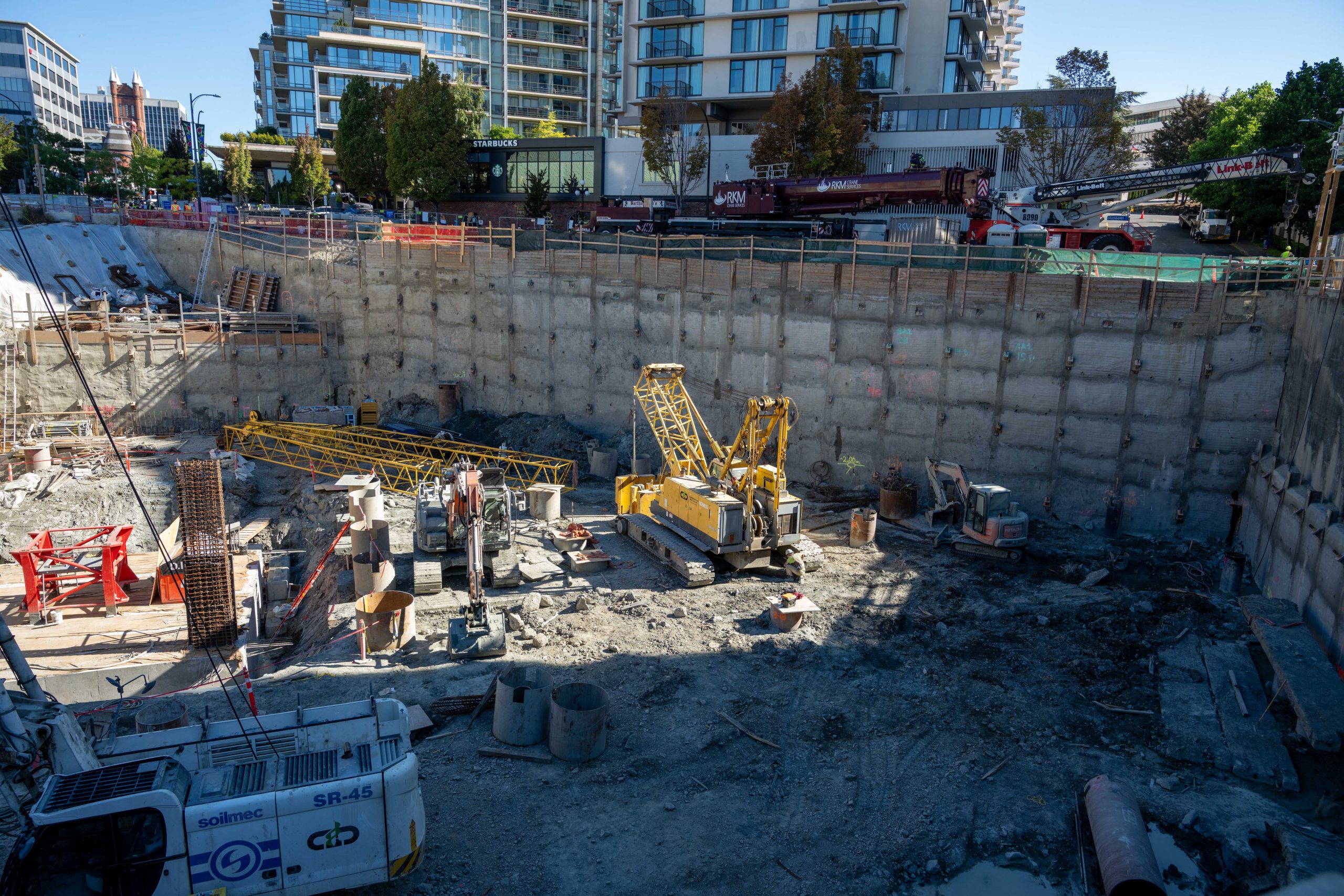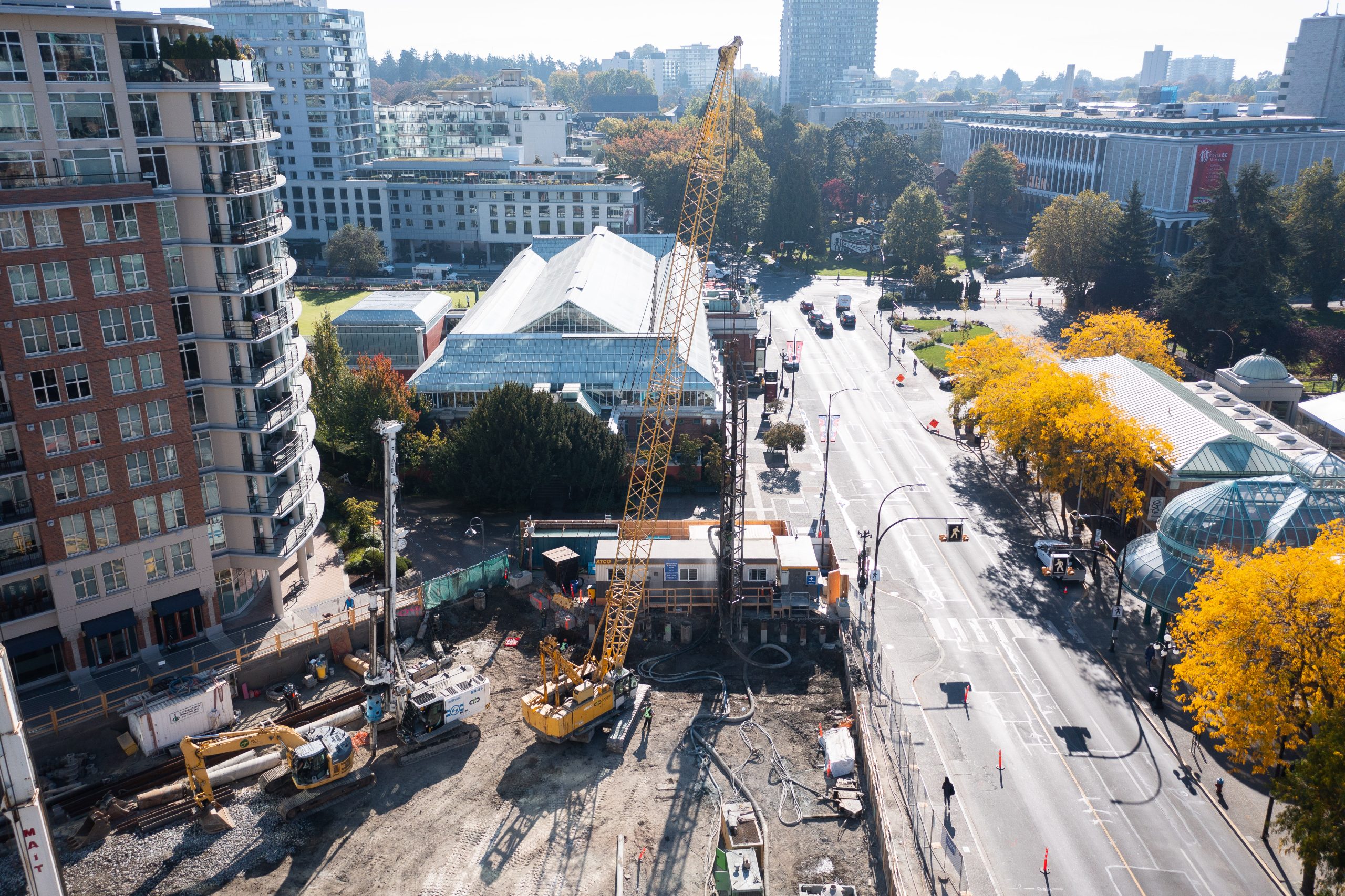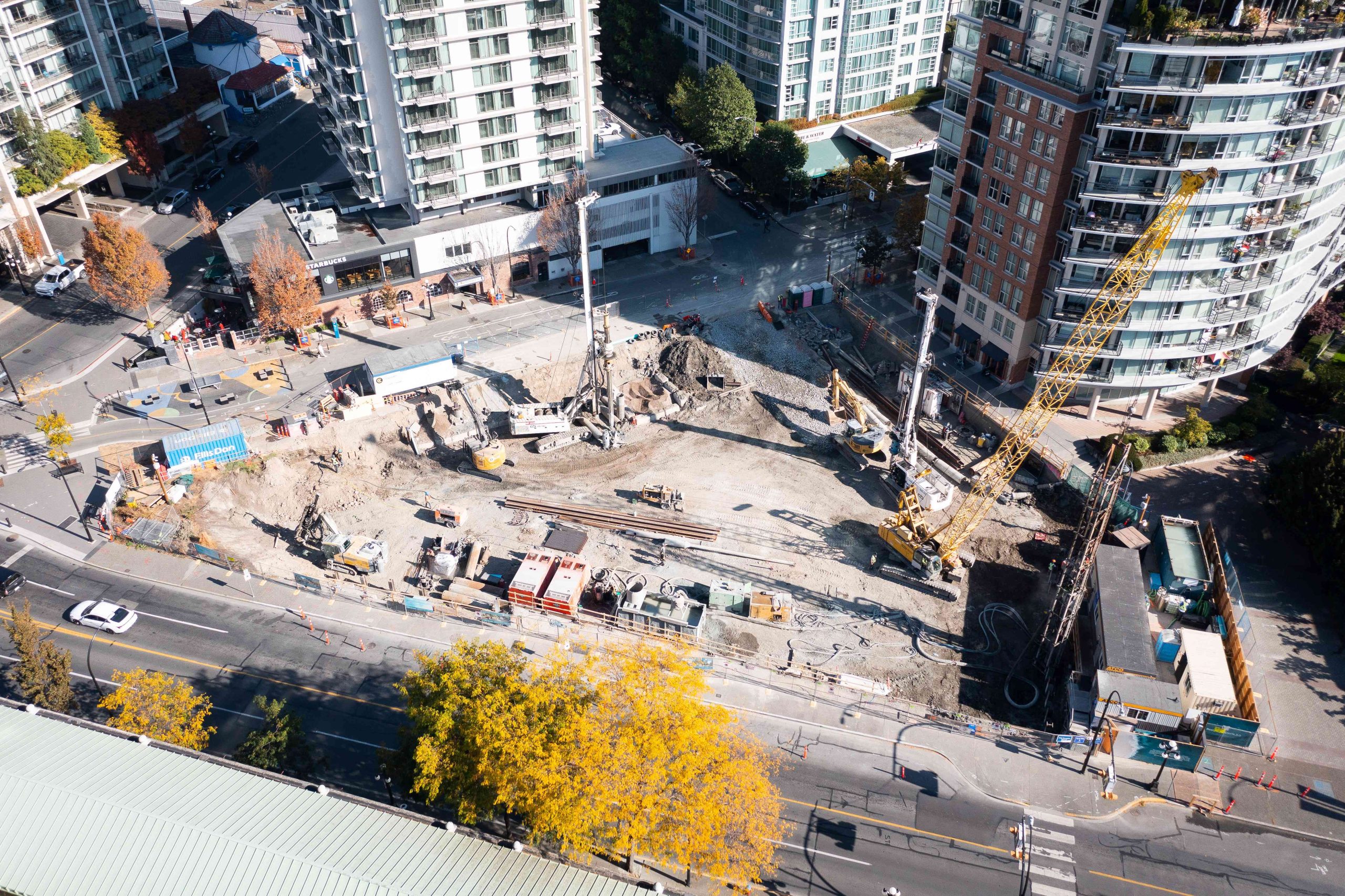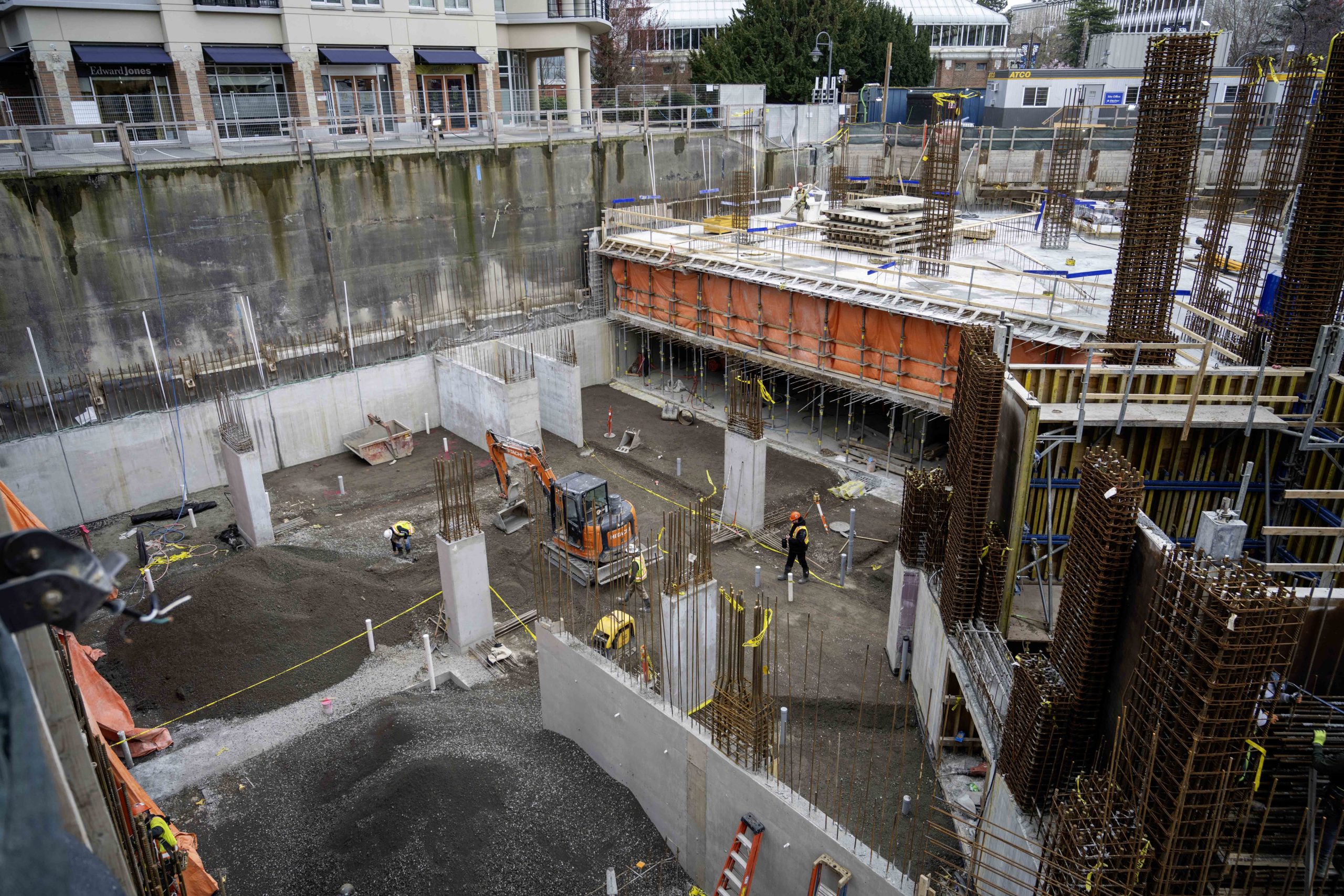767 Douglas Street
Key Project Information
- Project Type:
- Budget:$16M
- Timeline:June 2022 - July 2024
- Client:EllisDon
- Location:Victoria, BC
Scope of Work:
The 767 Douglas Street project in downtown Victoria was a complex undertaking for Copcan. The project required the demolition and removal of an underground parkade and the historic Empress Hotel Boiler rooms, involving the careful handling of asbestos and heavy metals. Given the project’s location right on the property line and its proximity to the ocean, several specialized shoring techniques were employed to ensure stability and safety.
For the waterfront side of the site, secant piles were installed and tied back with walers and rock anchors. This method was crucial for sealing groundwater and supporting the excavation near the ocean. The design and engineering of these walers were a critical part of the shoring scope, ensuring that the structure could handle the unique challenges posed by the waterfront location.
On the deeper excavation walls further from the water, soldier piles were used in combination with tieback rock anchors and shotcrete. This combination allowed for safe and effective vertical excavation along the property line, providing the necessary support for the excavation without compromising the adjacent structures or the stability of the site.
Overall, the project required a coordinated approach to shoring and excavation, incorporating advanced techniques to address the challenges posed by the site’s location and existing conditions.
Challenges & Solutions:
There were a few technical challenges faced during the construction of this project. Some of the major challenges and solutions were:
- Demolition and Asbestos Abatement: The removal of the existing underground structures, including asbestos and heavy metals, posed environmental and safety risks. Proper abatement procedures and hazardous material handling protocols were implemented to ensure safe removal and disposal.
- Proximity to Waterfront: The excavation footprint was close to the ocean, necessitating specialized shoring methods due to potential groundwater issues and structural stability concerns. The use of secant piles, tieback anchors, and walers for shoring, designed to seal off groundwater and provide structural support, is especially crucial for waterfront-facing excavation.
- Adjacent Building Support: Supporting the adjacent 12-storey Aria building during excavation without compromising its structural integrity. The integration of the Aria building’s existing underground parkade into the shoring system until the excavation depth required independent support, ensuring safety and stability.
- Contaminated Soil Management: Soil contaminated with metals and hydrocarbons from creosote timber piles required careful handling and disposal. The solution was hauling, and disposal of approximately 27,000m³ of contaminated soil at certified facilities, adhering to environmental regulations.
- Foundation and Excavation Depth: Building foundations required precision and careful excavation, especially with depths ranging from 7.6m above sea level to -8.9m below sea level. The use of concrete secant piles and precise blasting techniques designed in-house to meet safety and structural stability requirements during deep excavation.
- Traffic Management: Managing traffic flow on busy roads like Government St and Humboldt St, including maintaining access for cyclists on dedicated bike routes. Comprehensive traffic management plans are implemented to minimize disruption, prioritize cyclist safety, and ensure efficient excavation operations.
Overall Impact:
Construction began in June 2022 and was completed in July 2024. Although there were some delays and construction took longer than expected, overall the project progressed smoothly and was completed on the agreed time with the owners.
